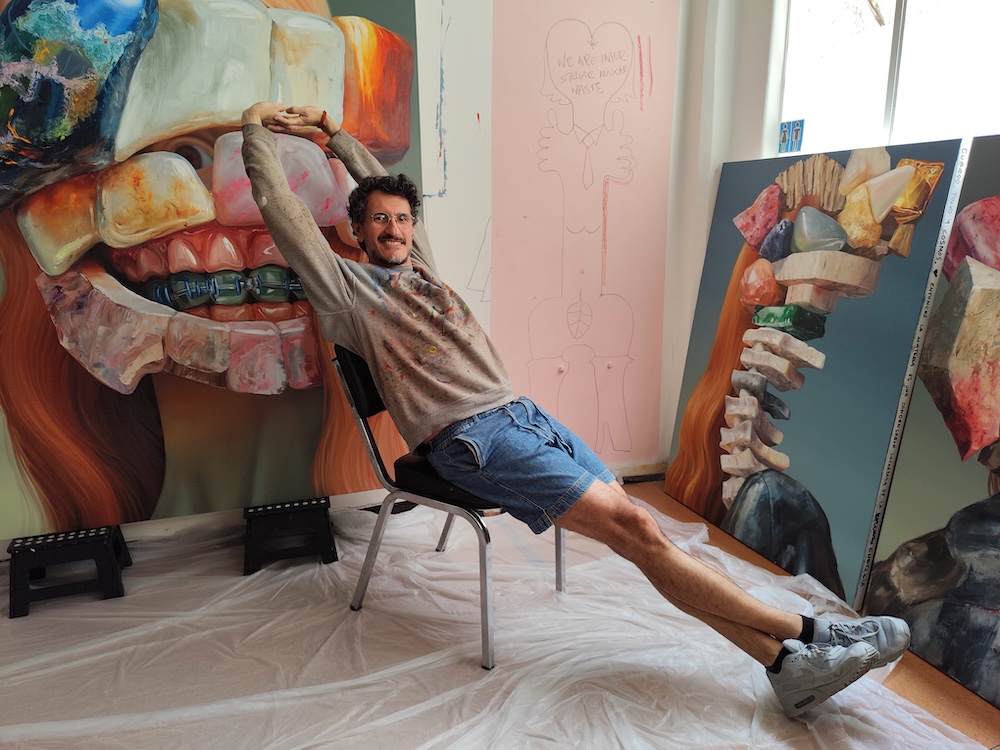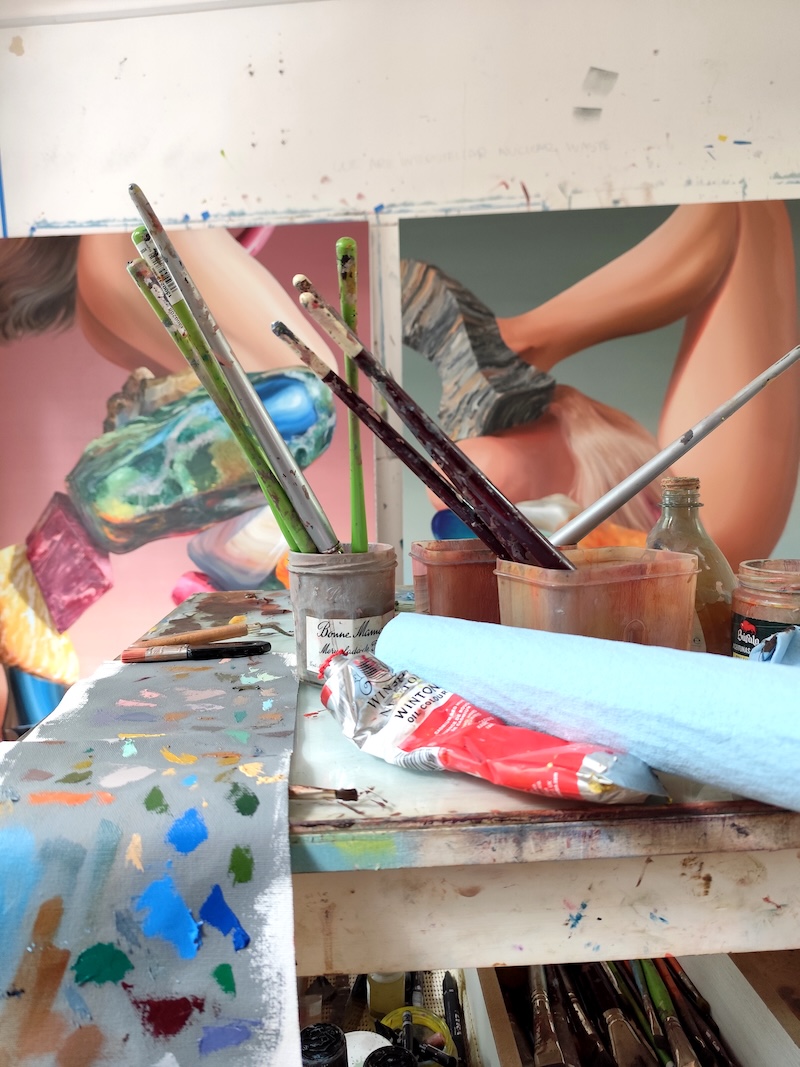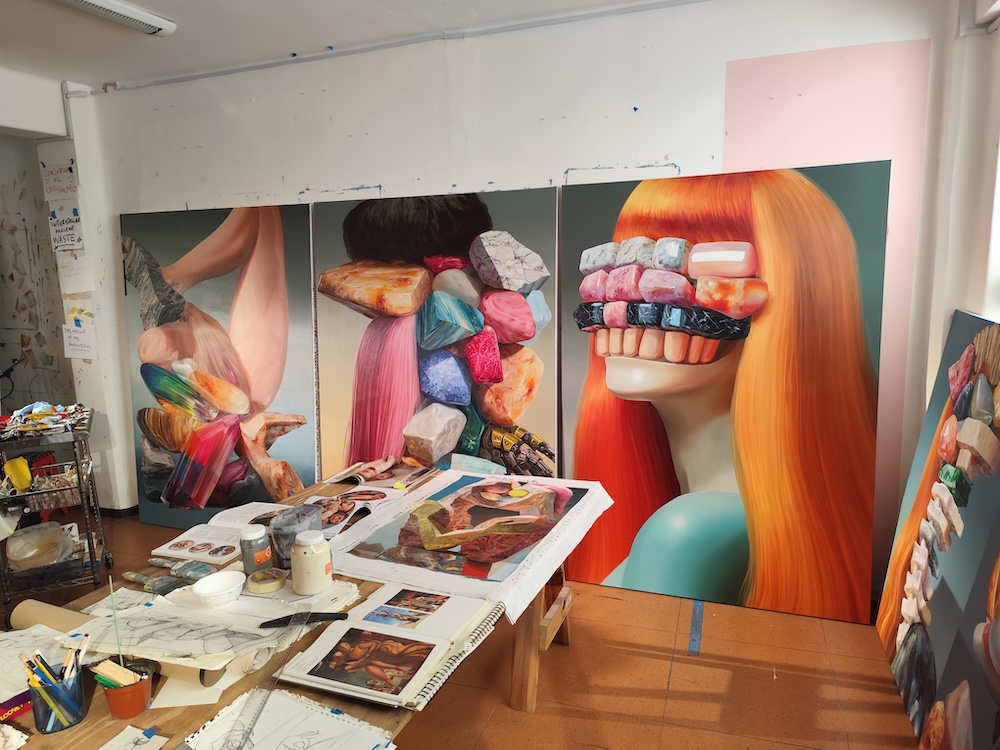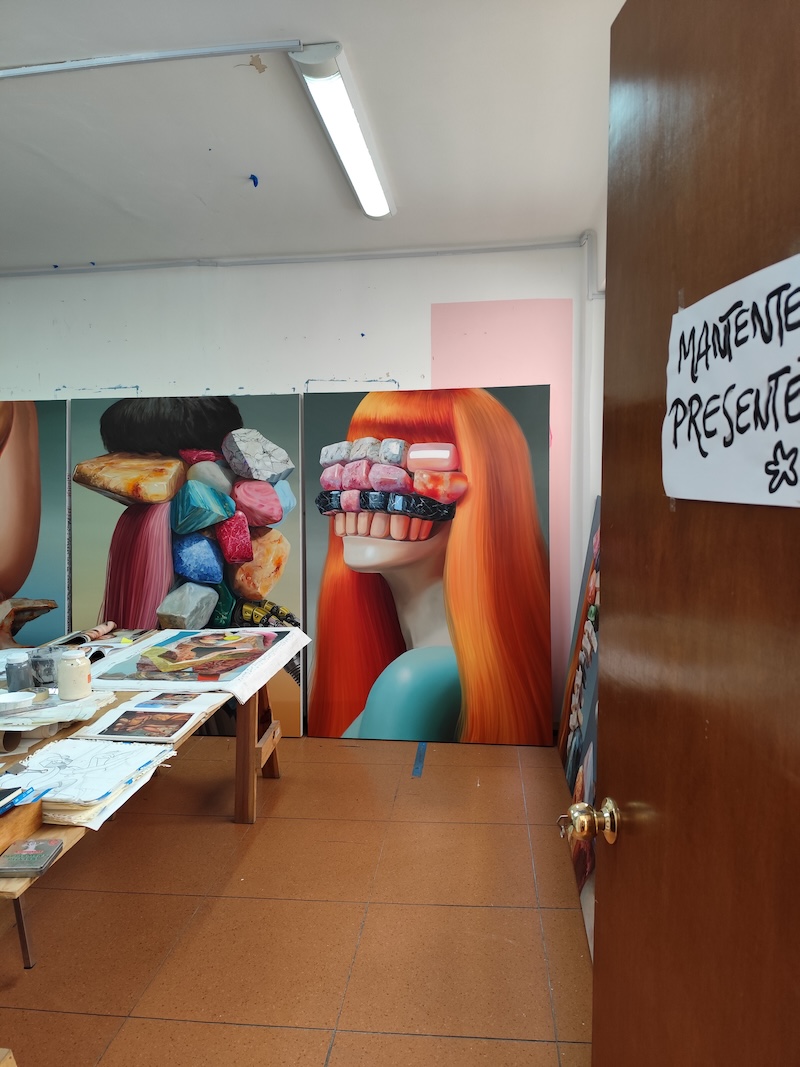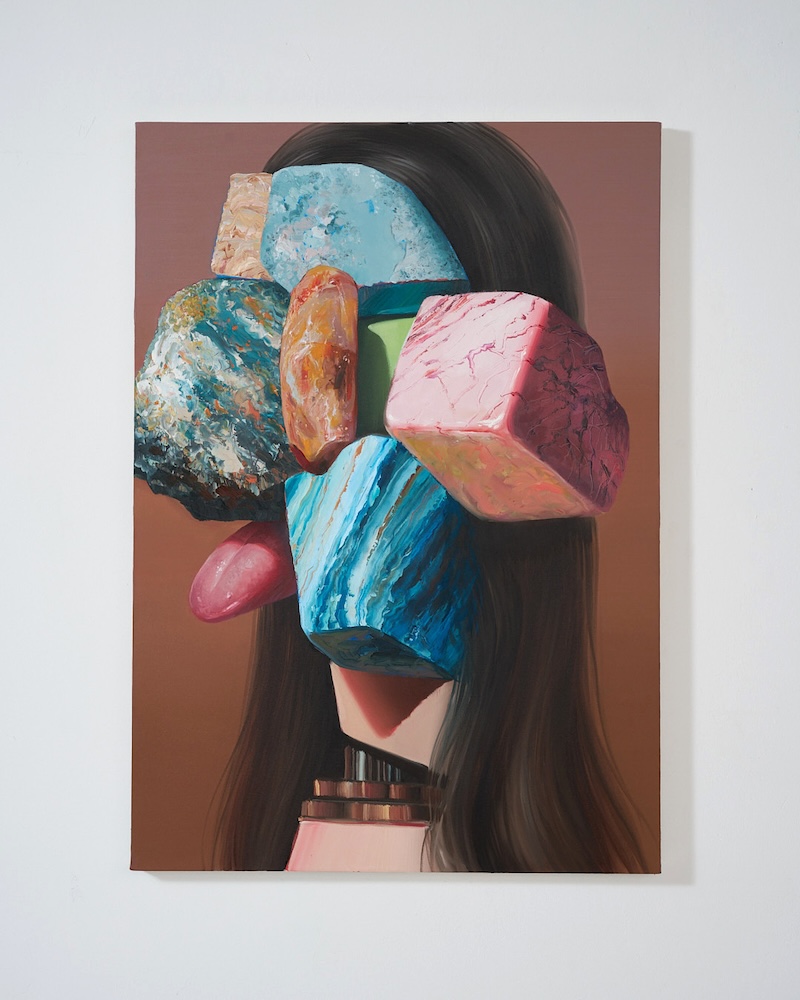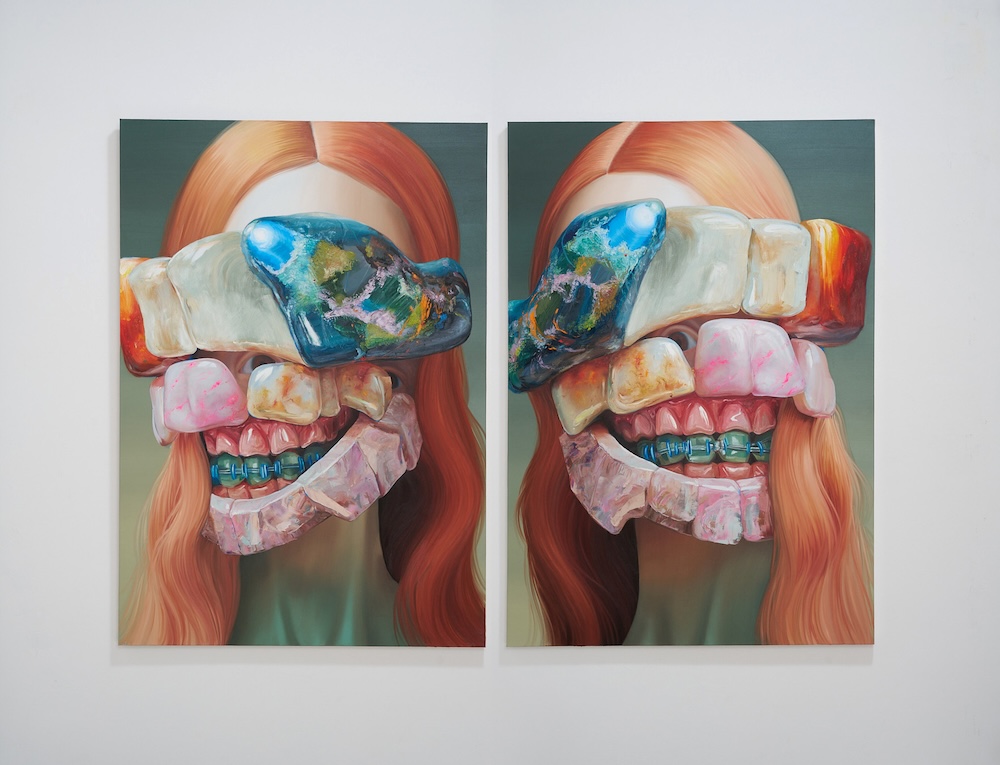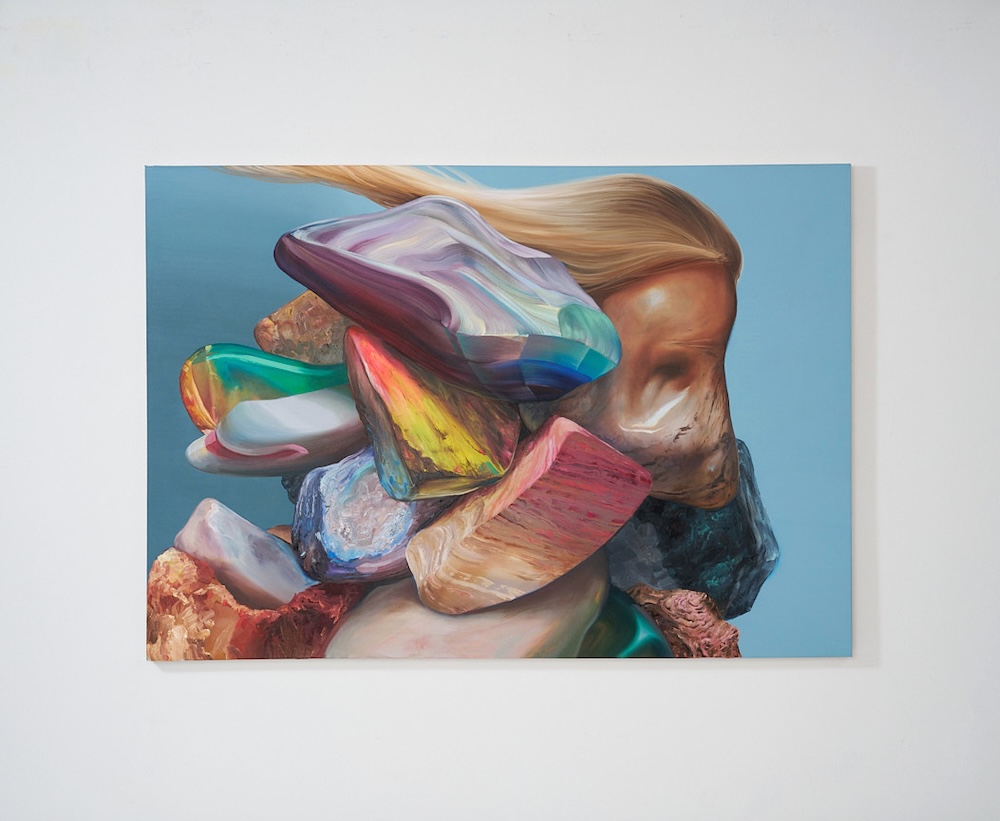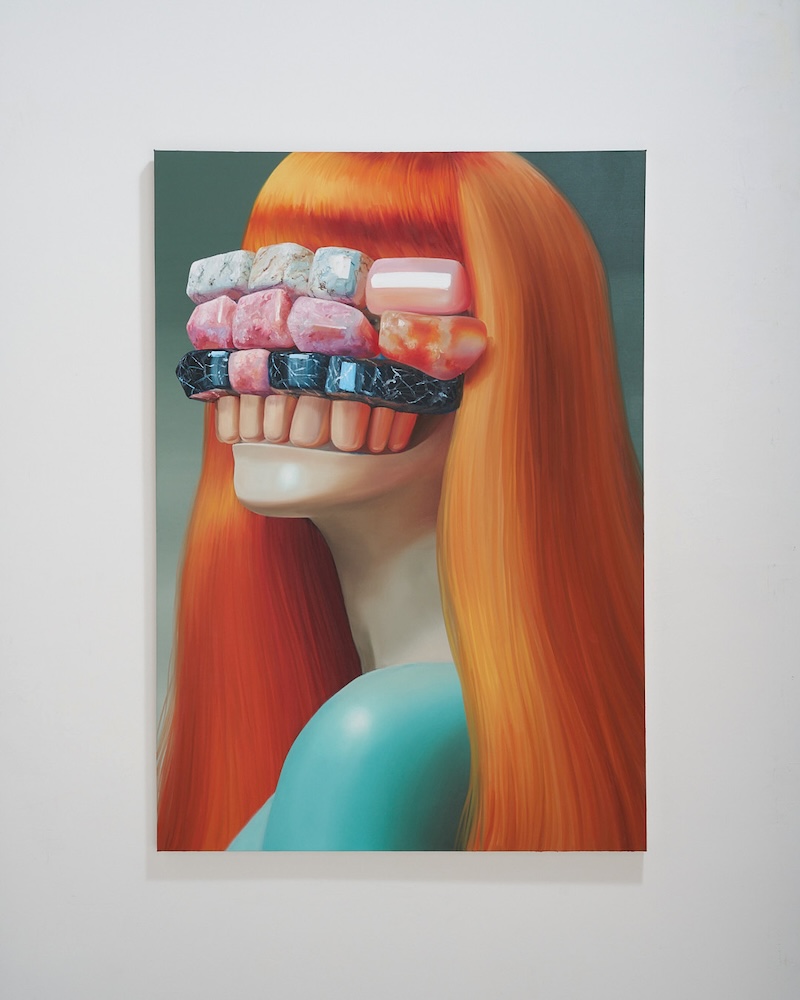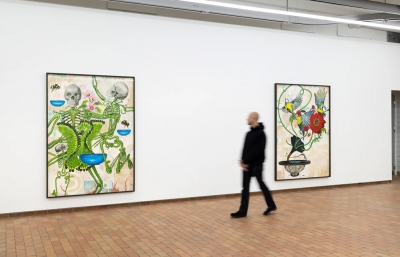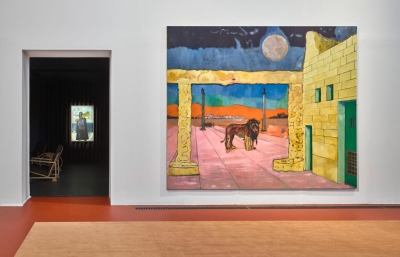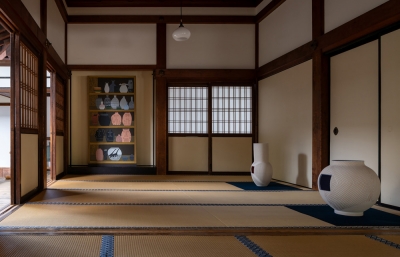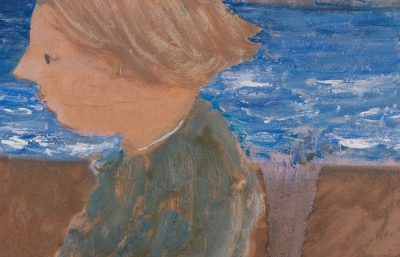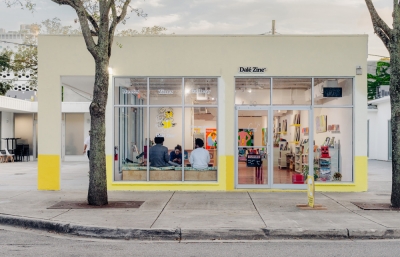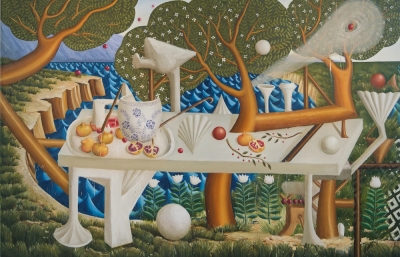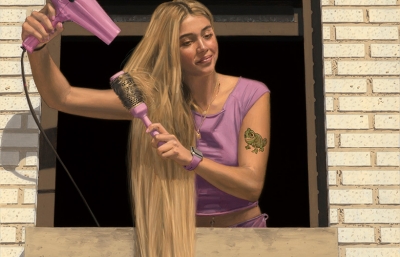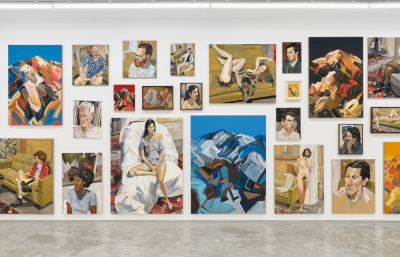In the fractured terrain of contemporaneity, where the boundaries between the organic and the digital dissolve, we finally understand that identity is not inheritance but invention¹, not destiny but becoming, a space of struggle and reinvention, where every transformation is an act of resistance and hybridity constitutes the most authentic form of contemporary being.
In `El peso de lo inmaterial´, Horacio Quiroz constructs a myth for our time, a posthumanist project where spirituality, artificial intelligence, painting, and the self converge in that liminal territory where the impossible takes on tangible form.
The exhibition rests on the paradox that the invisible exerts force upon the visible, transforming absence into a presence that reshapes our understanding of existence. Behind appearances lies the transcendent², and it is in that realm where the concept of ontological weight³ unfolds its full power: being acquires material density precisely through what remains hidden.
From that invisible density of being, the works take form as cyborg subjects, mestizo configurations that understand hybridity as the essence of the contemporary subject. These creatures do not dwell on the margins; they occupy the center of a new narrative about what it means to have a body, consciousness, and desire in the 21st century. They dissolve the boundaries between the human condition and the machine, moving through a landscape where traditional taxonomies prove insufficient.
But these forms are not merely aesthetic or technological combinations; they reflect a process of inner transformation, a gesture of opening toward the void from which something new may be born. Horacio Quiroz understands that every time an algorithm generates an image, or artificial intelligence composes a text, it activates the psychic echo of the one who once imagined that path. There is no artwork without subjective presence, creation becomes an almost ritual act, channeling the archetypes that inhabit the collective unconscious of our time.
In `El peso de lo inmaterial´, the boundaries between body, mind, and identity dissolve. The posthuman artist creates protean bodies, fusing flesh with stone, clay, and liquid metal, defying binary dualities and flowing with the intersexual freedom of one who never asked for permission to exist. Painting becomes a privileged space where the invisible takes form, where the intangible incarnates with weight and gravity.
This cosmic fertility resists all forms of domestication and marks the threshold of a posthuman individuation: a space where ancient archetypes are reborn in new forms, the digital shadow, the algorithmic anima, the cyborg self and where psyche transforms into code, and code becomes soul. Thus, `El peso de lo inmaterial´, reveals that the invisible is the true substance of the contemporary self. —Victoria Rivers



